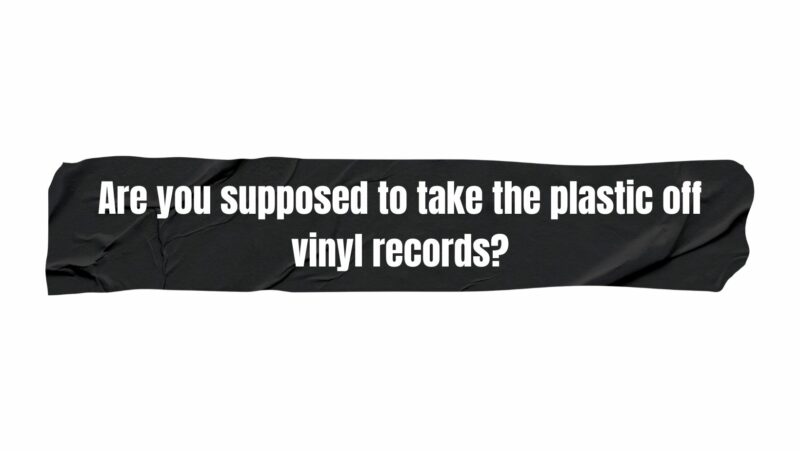The resurgence of vinyl records in recent years has sparked a revival of interest in physical music media. Vinyl’s tactile charm, analog warmth, and large album artwork appeal to both audiophiles and music enthusiasts. However, along with the joy of owning vinyl comes the question: Should the plastic shrink wrap that encases these musical treasures be removed? This article explores the debate surrounding whether or not one should take the plastic off vinyl records and examines the potential benefits and drawbacks of this decision.
Preservation vs. Presentation
The decision to remove or retain the plastic shrink wrap on vinyl records often boils down to a balance between preservation and presentation. Shrink wrap serves as a protective barrier against dust, moisture, and physical damage during shipping and storage. On the other hand, some collectors argue that removing the plastic enhances the visual and tactile experience of owning vinyl records, allowing the album cover’s artwork to be fully appreciated and the record to “breathe.”
Benefits of Removing the Plastic
- Visual Experience: Album covers are an integral part of the vinyl experience. Removing the shrink wrap allows collectors to fully engage with the cover art, read liner notes, and appreciate the overall design.
- Air Circulation: Some vinyl enthusiasts believe that records should “breathe” to prevent moisture buildup and potential mold growth. Removing the plastic may facilitate better air circulation around the album cover and reduce the risk of moisture-related issues.
- Reduced Off-Gassing: Shrink wrap can emit volatile organic compounds (VOCs) over time, which might interact with the vinyl or cover material. Removing the plastic could potentially reduce exposure to these gases.
Drawbacks of Removing the Plastic
- Physical Protection: Shrink wrap offers a layer of protection against dust, fingerprints, and minor handling damage. Removing it exposes the record to potential risks during handling and storage.
- Resale Value: Collectors who prioritize the long-term value of their vinyl records may find that keeping the shrink wrap intact preserves the record’s “mint” condition, potentially increasing its resale value.
- Aesthetic Appeal: While album cover art is a crucial component, some collectors appreciate the aesthetic appeal of a pristine shrink-wrapped record as part of their collection.
Storage Considerations
Whether or not the plastic should be removed also hinges on how records are stored. If records are displayed vertically and stored in an environment with controlled temperature and humidity, concerns about moisture buildup and airflow may be less relevant. However, if records are stored horizontally, without protective sleeves, or in conditions prone to humidity fluctuations, removing the shrink wrap might be considered a preventative measure.
Collectors’ Perspectives
The decision to remove or retain shrink wrap often varies based on individual preferences and collecting philosophies. Some collectors meticulously remove the shrink wrap to savor the visual experience and prevent potential long-term effects, while others value the protection it provides and consider it an integral part of the record’s history.
Best Practices
For those considering whether to remove the plastic, it’s essential to do so with care. Using a sharp blade or scissors, carefully cut along the seams of the shrink wrap to avoid accidentally damaging the album cover. Additionally, handling the record by its edges and avoiding contact with the grooves ensures the vinyl remains free of fingerprints and smudges.
Conclusion
The decision of whether to remove the plastic shrink wrap from vinyl records is a personal choice that encompasses preservation, aesthetics, and collecting philosophies. Both perspectives have valid points, and the choice ultimately depends on how collectors prioritize the protection and presentation of their vinyl records. By considering the benefits and drawbacks of removing the shrink wrap and adopting proper storage practices, collectors can make an informed decision that aligns with their appreciation of vinyl’s unique qualities. Whether one chooses to preserve the pristine protection or unveil the album’s visual and tactile beauty, the joy of vinyl records remains at the heart of the debate.

